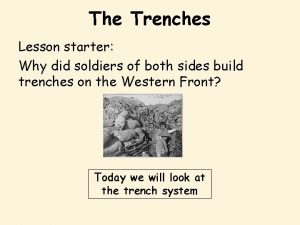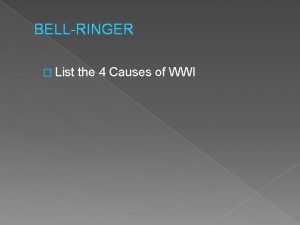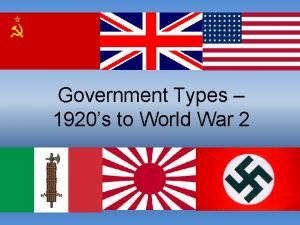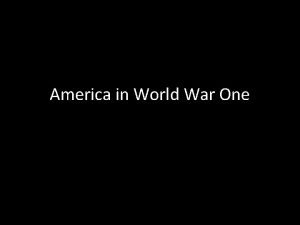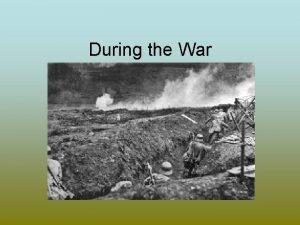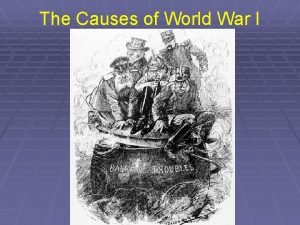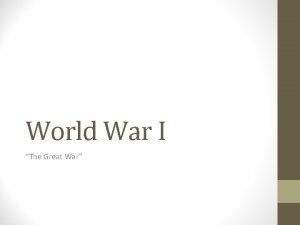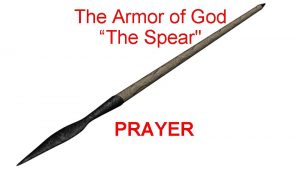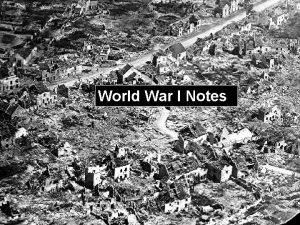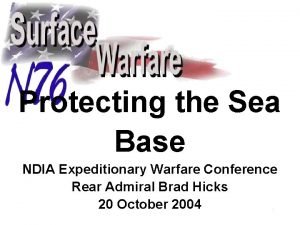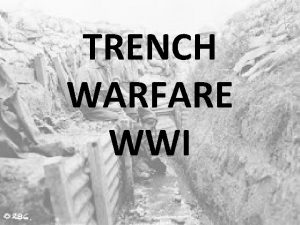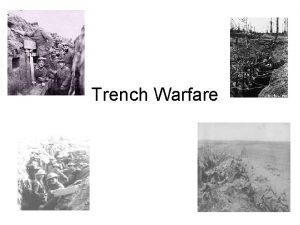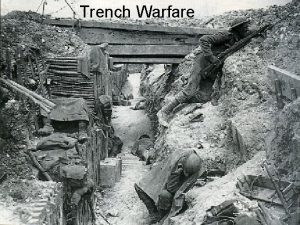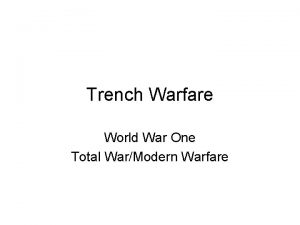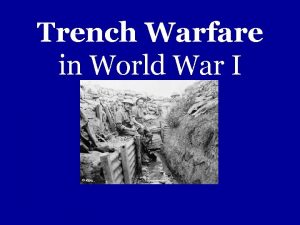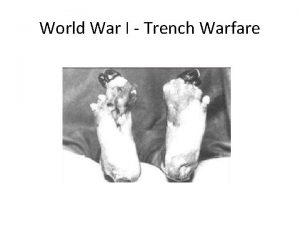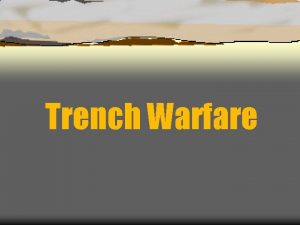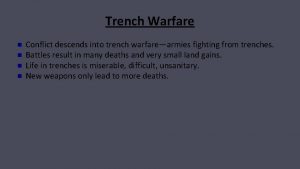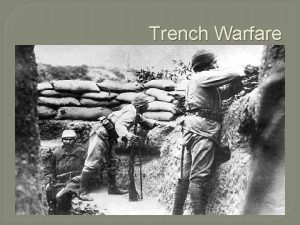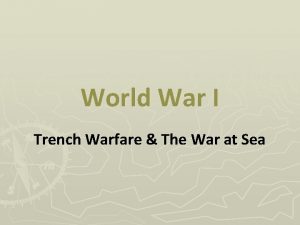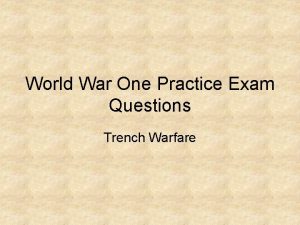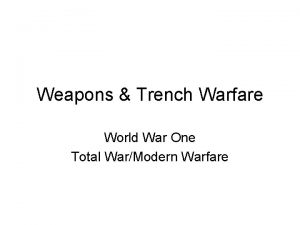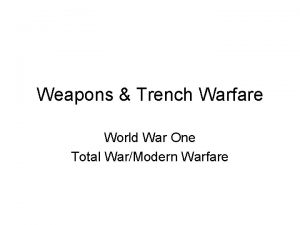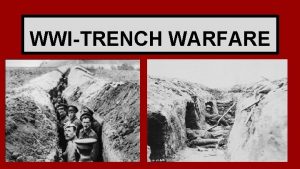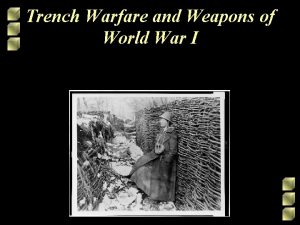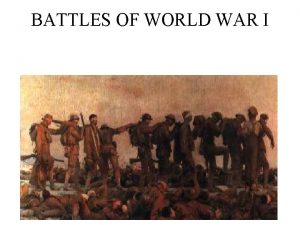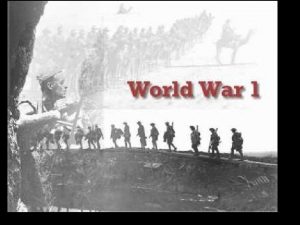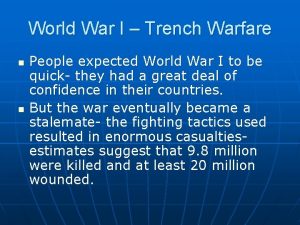Canada in World War One Trench Warfare Western

























- Slides: 25

Canada in World War One

Trench Warfare



Western Front

No Man’s Land




Trench Foot


Trench Rats




The Battle of Ypres � Canadians in the Ypres salient in April of 1915 were subjected to the first German gas attack with deadly chlorine. � First gas attack happened on April 22, 1915, and again two days later. � Use of gas for military purposes was outlawed in 1907 � French–Algreian troops in the line with the Canadians broke and ran leaving a 6 km hole in the line. �April 24, 1915 – second gas attack hits the Canadians head-on.

�Many tried to lay face down in the trenches to avoid the gas but being heavier than air, the gas found them and killed them. �Nobody carried gas masks at this point in the war �Soldiers used urine-soaked cloths over their noses and mouths to protect from the gas �The Canadians held the line for three days until French and British reinforcements arrived.

�Led by the Princess Patricia's Canadian Light Infantry, Canadians gained a reputation for their courage and tenacity while holding the line for four days in the face of the gas attacks. �The Princess Pats were able to regain control of the Ypres Salient. �Canada suffered 6500 casualties with more than 2000 dead �John Mc. Crea wrote his famous poem “In Flanders Fields” in May 1915


Ypres Salient 1915


The Battle of the Somme �July 1916 – British and French forces under the command of General Douglas Haig try to end trench warfare with a massive attack on German trenches near the Somme River. �General Haig insisted on using outdated strategies of marching soldiers across no man’s land directly into the fire of German machine guns �Nearly 60, 000 allied troops were killed in the first few hours of the battle � At Beaumont-Hamel almost the entire Newfoundland Regiment died in a few minutes of an ill planned attack.

�The campaign on the Somme shattered three Canadian divisions at the cost of 24, 029 lives. �When the battle ended less than five months later, only 12 kilometers of land were gained �Casualties for both sides reached 1. 25 million. �The Battle of the Somme was a disaster for a number of reasons: �The Allies’ shells were too weak to penetrate German concrete bunkers

� Underground explosions did not dislodge the wire protecting German trenches and therefore Allied troops became trapped � Allied troops were overloaded with 25 -60 kg of gear � A nearby mine was detonated 10 minutes before the attack which warned the Germans, causing the Allies to lose the element of surprise � The attack was delayed and took place in broad daylight � The attack was ordered to continue despite huge casualties � 23 Canadians were ordered “shot at dawn” because they would or could not return to the front.

 Trench warfare propaganda
Trench warfare propaganda The war to end all wars
The war to end all wars Why did trench warfare happen
Why did trench warfare happen How did the treaty of versailles affect postwar germany?
How did the treaty of versailles affect postwar germany? Why were military leaders baffled by trench warfare?
Why were military leaders baffled by trench warfare? World war 2 jeopardy questions
World war 2 jeopardy questions One world factors
One world factors World war one
World war one World war one
World war one World war one
World war one World war one
World war one “we are trying to prevent a world war, not start one”
“we are trying to prevent a world war, not start one” Ww1 alliance cartoon
Ww1 alliance cartoon Long term causes of ww1
Long term causes of ww1 Joint warfare analysis center
Joint warfare analysis center Electronic warfare
Electronic warfare Ptsd spiritual warfare
Ptsd spiritual warfare Pros and cons of biological warfare
Pros and cons of biological warfare Selective service act of 1917
Selective service act of 1917 Ephesians weapons of warfare
Ephesians weapons of warfare Spear in spiritual warfare
Spear in spiritual warfare Wage a good warfare with the prophecy
Wage a good warfare with the prophecy Mania in ww1
Mania in ww1 Undersea warfare conference
Undersea warfare conference Ancient warfare weapons
Ancient warfare weapons Olmec glyphs
Olmec glyphs


